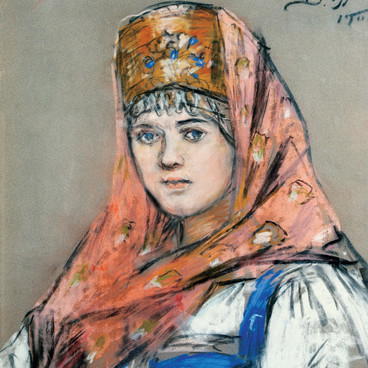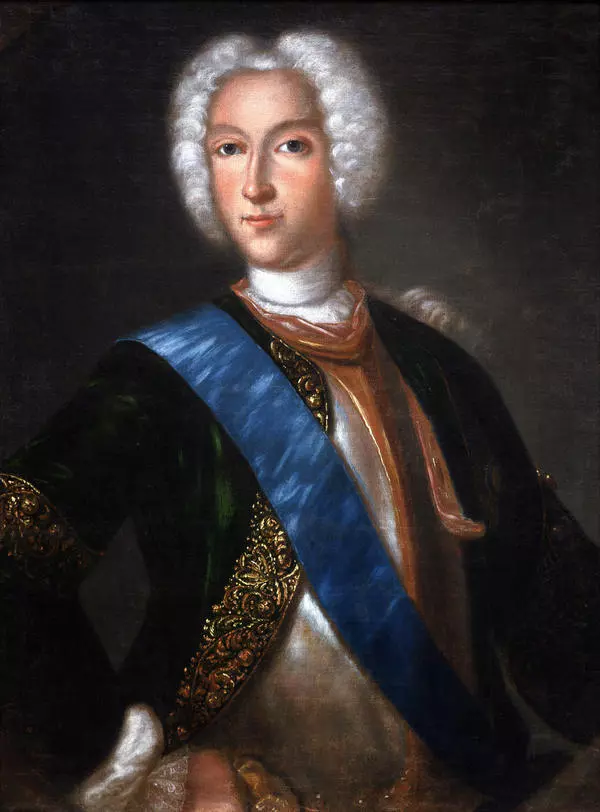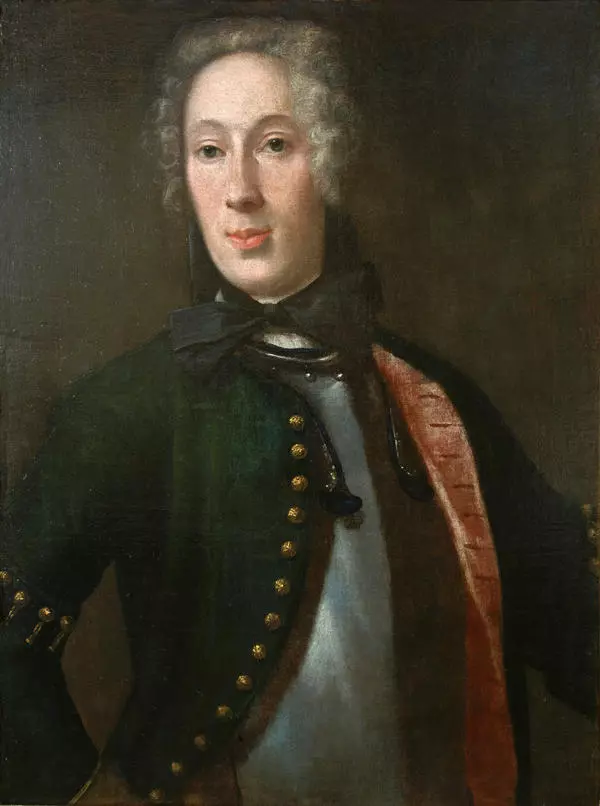The portrait of Empress Anna Ioannovna was painted by Baltic artist Johann Heinrich Wedekind in 1730. He was one of the first painters at the court of Russian emperors. Wedekind became the founder of the secular portrait genre in Russian art. The painting is made in the style of Classicism, which was widespread in the 18th – early 19th centuries.
Portrait of Empress Anna Ioannovna
Время создания
1730
Размер
76x57 cm
Техника
Oil on canvas
Коллекция
Выставка
#1
Johann Heinrich Wedekind
Portrait of Empress Anna Ioannovna
#2
#3
One of the artistic techniques of the classicist portrait is the low perspective. That was what Johann Wedekind used in the picture, that is why the viewers think that they are looking at the painting from the bottom up. This gives the impression of power and authority of the Russian Empress.
#4
Anna Ioannovna was the second daughter of Tsar Ivan V and Tsarina Praskovia Fyodorovna (Saltykova). She ruled the Russian Empire from 1730 to 1740. The painting depicts Anna Ioannovna waist-high. She is dressed in a formal dress with a low neckline to the 18th-century fashion. The outfit is made of brocade and woven with shiny silver patterns. The bodice of the dress was tightened so that the waist seemed thinner. The front dense part of the dress – stomacher – was attached to the bodice with a hard clasp in the form of a brooch – agraffe. The one worn by Anna Ioannovna is decorated with a lot of diamonds.
#5
The underskirt of the dress was made of silk or satin. In winter it was quilted: they stitched together two pieces of fabric and placed a layer of cotton wool was between them. The overskirt has an oval shape, such a silhouette was popular in the 18th century. Anna Ivanovna’s outfits were made by the tailor that she had brought with her from Courland.
The head of the Russian Empress is adorned with a miniature golden crown, decorated with pearls and precious stones. In the centre of Anna Ivanovna’s chest hangs the Order of St. Andrew the First-Called in its most solemn version: on a gold chain with coloured enamel. In the 18th century it was the highest insignia. It was customary to award this order to royalty at birth.
#6
The painter Johann Wedekind was born in Tallinn in 1674, but lived and worked in Sweden. They started talking about the Baltic artist when he painted a portrait of the Swedish king Charles XII. In 1725, at the invitation of Emperor Peter I – Anna Ioannovna’s uncle – Johann Wedekind arrived in St. Petersburg and became a court painter. He painted portraits of Tsar Peter the Great, his family and close associates.
#7
In 1710, Anna Ioannovna was given in marriage to Friedrich Wilhelm – Duke of Courland. Today Courland is a historical region of Latvia. Four months after the wedding, the duke died. Anna Ioannovna continued to live in Courland until the death of Russian Emperor Peter II in 1730. When Peter II died, the Supreme Privy Council invited Anna Ioannovna to take the Russian throne. Having become Empress, she dissolved the Privy Council and took all power into her own hands. Later, the reign of Anna Ioannovna began to be called Bironovshchina (The Age of Biron). The favourite of the Empress was Duke Ernst Johann Biron, who had unlimited power. In 1740, the Empress died of gout.
читать дальшескрыть
00:00
00:00
1x
Portrait of Empress Anna Ioannovna
Время создания
1730
Размер
76x57 cm
Техника
Oil on canvas
Коллекция
Выставка
Открыть в приложении
Поделиться





